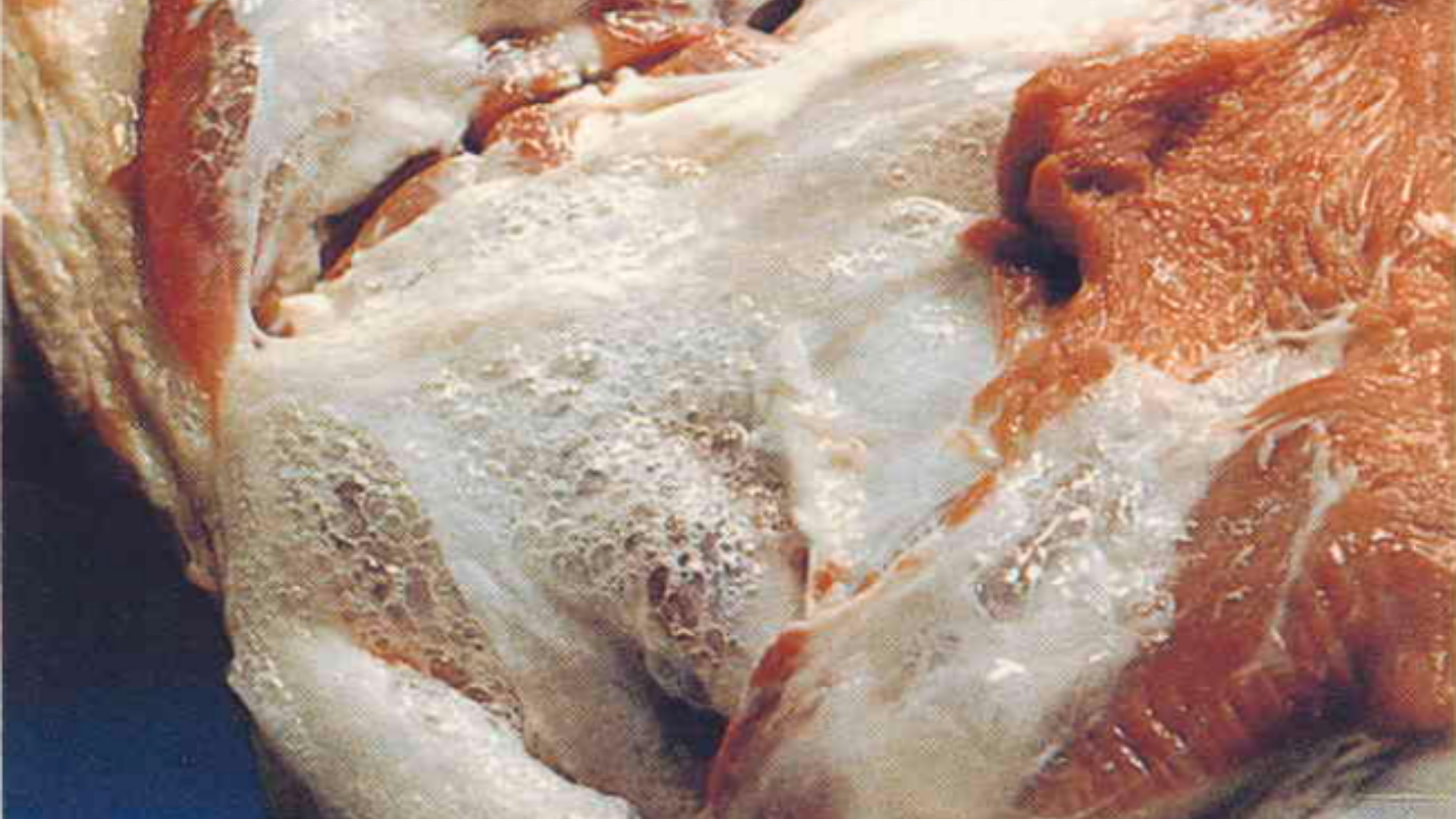
Ovine wet carcass syndrome is a condition characterised by a wet shiny appearance of a carcass due to the accumulation of a watery fluid in the subcutaneous and other connective tissues of the carcass. Affected carcasses have poor keeping qualities and are also aesthetically unacceptable to the customer. Losses due to this condition because of condemnation or trimmings have a seasonal incidence of enormous proportions in the sheep industry. Although this condition was researched and investigated during the last 15 years, it can be concluded that many factors influencing the food and water intake of sheep over an extended period prior to slaughter, may induce this condition.
They are:
- Chronic ketosis during the week or days prior to slaughter.
- Source of energy and feeding patterns during the feeding period.
- Water deprivation patterns prior to slaughter.
- Rest periods before slaughter.
- Undue stress because of transport and handling prior to slaughter.
The interstitial fluid of wet or oedematous carcasses show the following significant changes compared to normal ovine interstitial fluid:
- Total protein content (g/l) (14 vs. 52)
- Albumin to globulin ratio (3.2 vs. 1.5)
- Osmotic pressure (mm Hg) (3 vs. 9)
Ovine wet carcasses can be prevented or at least controlled taking the following into consideration:
- Slaughter sheep should only be restricted from water during transport periods.
- Slaughter sheep must be rested overnight or (at least) for 8 hours prior to slaughter.
- In the case of sheep subjected to poor feeding, this rest period may be lengthened with access to roughage 2 to 4 days prior to this period.
- The chilling period of suspect cases should be lengthened with an additional 8 - 12 hours under optimum conditions e.g., airspeed.
Although the development of ovine wet carcasses is of a multi-factorial nature with an underlying nutritional basis, the resolution lies with both the producer and the abattoir industry to limit the condition to an acceptable level.
